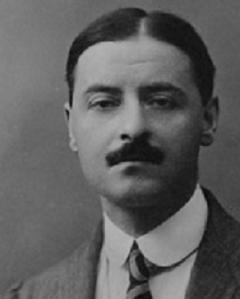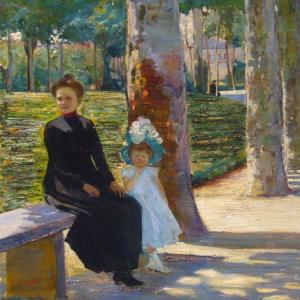Scheda
Carlo Corsi was born in Nice in 1879. Still a child, he was able to understand that drawing would be important in his life. However, Carlo Corsi was not immediately initiated to artistic studies, as he enrolled in the Faculty of Engineering, which he attended until his sister’s participation as a singer in Valkyrie in the ‘Teatro Comunale’; it was then that he abandoned his his studies and, being fascinated by the artistic world, undertook new ones in Turin. While still struggling to find his own way through different pictorial experiences, he was invited to the Venice Biennial in 1912; from that moment on he began to participate in exhibitions in cities such as Munich, San Francisco and Rome (on the occasion of the four editions of The Secession). He stopped during World War I when he returned to the Venice Biennial, and was later politically involved in trade unions and regional events. In 1914 he was awarded the “Youth Prize” in Bergamo. Corsi, as a result of his independent thought and intellectual vivacity, continued to be “secessionist to the last” ; “ he worked freely, not against his contemporaries but in a self-chosen relationship with them” ( F. Solmi); he was almost neglected by the critics, who seemed to be interested in ordering the process of the artists according to precise patterns. The series of exhibitions of Carlo Corsi became more productive after a new pause due to World War II. Carlo Corsi worked until the end (in August 1966) always ready to experiment and pursue the urge of “new” and also lucidly confident in thinking that art is “a tool that helps to clarify human conditions”.
Critical anthology
“Carlo Corsi gets intoxicated in the sun and seems to be painting with it” (D. Angeli 1915); “… Since I was a child, for my outburst and pleasure and for common tranquillity, in my family they understood that I had to be continually supplied with ‘lapis’, pencils, colors, scissors, cards and cartoons. I did not even know what I was doing and why I did it”. “Much later I became aware of the concerns that had oppressed me since my childhood, of the passionate nostalgia that every place or environment aroused in me. I did not know, I did not imagine that they were a manifestation, almost the revelation of poetry”. ( C. Corsi 1958). “His is an intellectual captation of a geometry of undoubtedly cubist source; not intellectual, however rather of an absorbed physicality that results in all its fullness, and a sort of almost magical existential palpitation”. “Corsi never goes back to an ordered pattern; if ever, he returns to life; but life is never, never the same as before”. “ For an artist who was not supported by such an indestructible internal connective as that of Corsi, the accusations of discontinuity or incoherence would be normal routine; however, these accusations fall in front of the enthusiasm with which he faces every adventure, in a mental and sensitive youth that never fails to amaze us” (F. Arcangeli 1964). “It is commonplace to menion the diversity of Carlo Corsi, which costs him marginalization for decades”. (F. Solmi 1964)
Is buried in to family monument placed in to the Chiostro V or Maggiore of the Certosa cemetery, arch 39.
Traduzione di Matteo Grippo, Alessia Pagliero e Federica Sibani; Liceo ginnasio Luigi Galvani Bologna, classe 3Q. Supervisione prof.ssa Annamaria Marconi.



